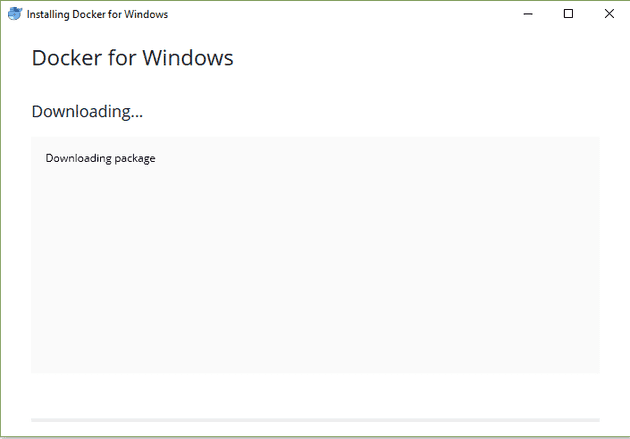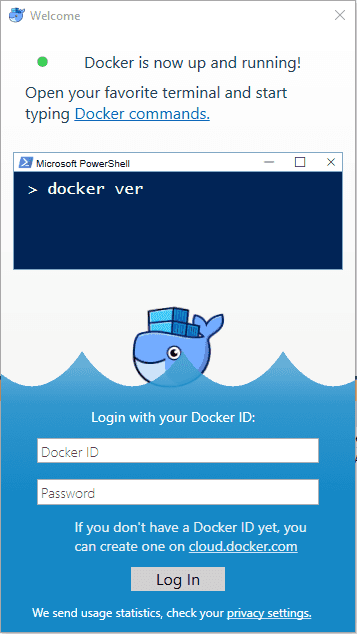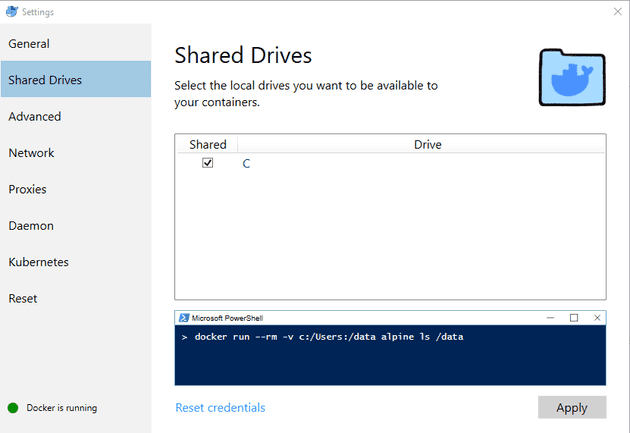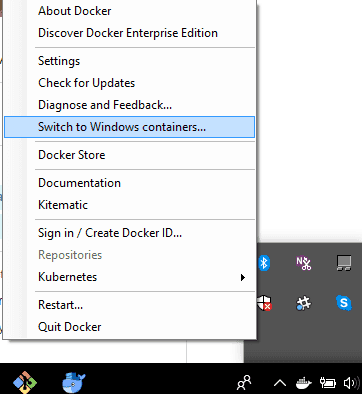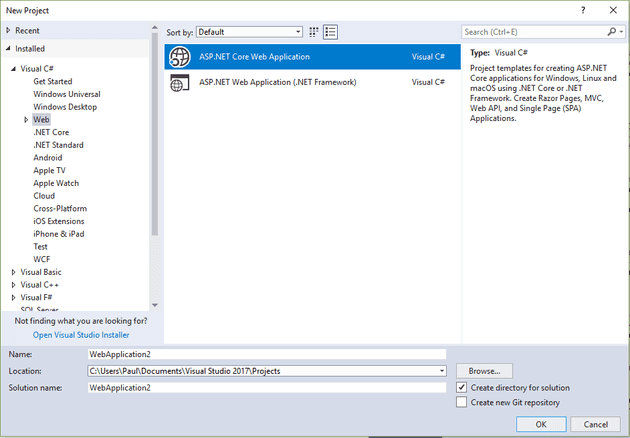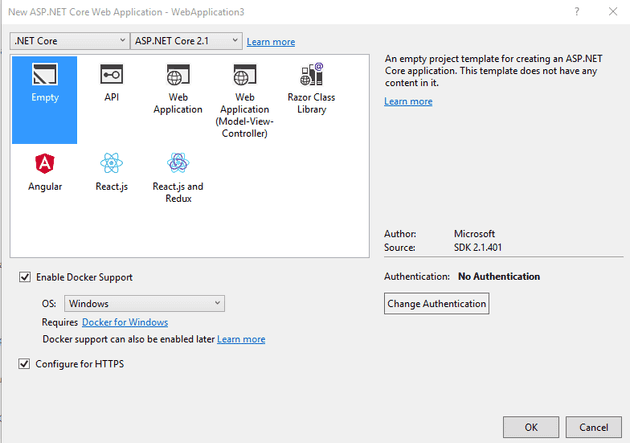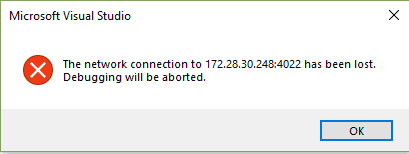Until recently, I’ve pretty much managed to avoid the container revolution. However, as the tools are becoming much more integrated, and the technology much more pervasive, I thought I’d document my journey into the world of containers.
As far as I can tell, the battle between types of containers and orchestrators is now over, and the VHS has emerged as Docker and Kubernetes; at least, MS, Google and Amazon seem to think so.
Docker - from step 0
Let’s follow the process through from nothing; the first step is to visit the Docker Store here.
Once you’re there, you’ll need to pick a username and sign in. After this, you can download Docker for Windows:
Once downloaded, run it, and you’ll see this bizarre screen, that seemingly lives in your way:
You can just close this: docker actually lives in your system tray. Right click there and select Settings:
Share your drive that you’re planning to run your Asp.Net Core code from.
By default, docker installs with a Linux bias, so the next step is to switch to Windows Containers (again in the right-click context menu):
Finally, some code…
Okay, Docker is now primed and ready to run a container. Let’s create our new project:
After you okay this, you’ll notice that there’s a new “Add Docker Support” in the create Project dialogue:
Once you create this (and persuade your browser and Docker that you’re not too bothered about certificates for the minute) it should run out of the box:
To prove it’s running, open Power Shell and type:
docker ps
Or, to take the more brute force approach by just restarting docker and have a look at VS:

